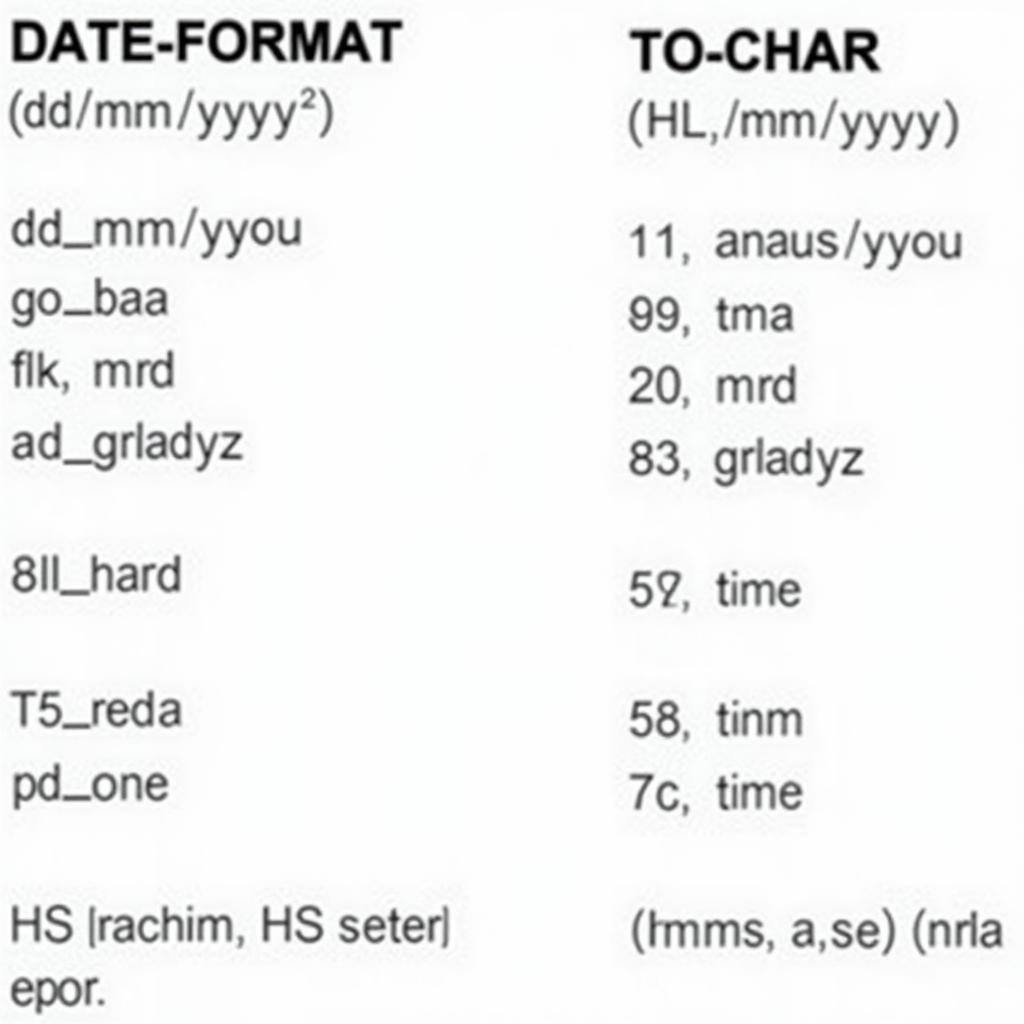Formatting calculation results in queries is a crucial technique for presenting data clearly, understandably, and professionally. This article will guide you on how to do this effectively, from basic to advanced levels, suitable for various database management systems.
Number Formatting with ROUND, TRUNC, CEIL, and FLOOR Functions
The ROUND, TRUNC, CEIL, and FLOOR functions are useful tools for rounding numbers in queries. The ROUND function rounds a number to a specified number of decimal places. TRUNC truncates the decimal part without rounding. CEIL rounds up to the nearest integer, while FLOOR rounds down. The choice of function depends on your specific requirements. For example, when calculating revenue, you might use ROUND to round to two decimal places. When calculating the number of products, TRUNC or FLOOR would be more appropriate.
String Formatting with CAST, CONVERT, and FORMAT Functions
When working with strings, CAST and CONVERT allow you to change data types, for example, from number to string. The FORMAT function helps format strings according to a specific pattern, such as adding commas to large numbers or formatting dates. The combination of these functions helps you present string data professionally and consistently. For example, you can use FORMAT to display phone numbers in the format (XXX) XXX-XXXX.
Date and Time Formatting with DATE_FORMAT and TO_CHAR Functions
DATE_FORMAT (in MySQL) and TO_CHAR (in Oracle) are powerful functions for formatting dates and times. You can customize the format as desired, from displaying day, month, and year to displaying hours, minutes, and seconds. This is very useful when you need to present time data in a standard format or according to report requirements. For example, you can display dates in dd/mm/yyyy or mm/dd/yyyy format.
 Date and time formatting in a SQL query example
Date and time formatting in a SQL query example
Handling NULL and Special Values
When encountering NULL values, you can use COALESCE or ISNULL to replace them with a default value. This helps avoid errors and ensures data continuity. For other special values, you can use CASE or conditional functions to handle them on a case-by-case basis.
Have you ever needed to find vlookup for multiple results? Check out the article vlookup multiple results for more details.
Optimizing Query Performance
When formatting results, be mindful of query performance. Avoid using too many formatting functions in the WHERE clause as this can reduce efficiency. Instead, format the results after filtering the data.
Copying SQL results to Excel is also very important. Refer to the article copy sql results to excel to learn more.
Conclusion
Formatting calculation results in queries is an essential skill that helps you present data effectively. By using the functions and techniques mentioned in this article, you can create professional, understandable reports and data displays that meet specific requirements.
FAQ
- How to round a number to 2 decimal places?
- Which function is used to format dates?
- How to handle NULL values in a query?
- How to optimize performance when formatting results?
- Is there a function to format currency?
- How to display percentages in query results?
- Can I format strings with custom patterns?
Description of common question scenarios.
Users often have difficulty choosing the appropriate formatting function for specific data types and requirements. They also need to know how to combine functions to achieve the desired format. Optimizing query performance when formatting results is also a concern.
Suggestions for other questions, other articles on the web.
You can learn more about excel find different results in two columns and php lottery result code.
